
Download the PDF of this article
Today’s children are the generation who will be most affected by major sustainability issues. Even early years children can do something positive to address the challenges facing our societies and planet if they are given the knowledge and understanding and enabled to develop the skills to question and make changes.
Rather than focusing on just environmental issues, according to UNESCO, there are three pillars necessary to shape a sustainable future:
- Social – an ethical responsibility to do something about human inequality, social injustice and poverty.
- Economic – developing a sustainable economic model to ensure fair distribution and allocation of resources.
- Environmental – not taking our natural resources for granted and protecting our planet.
WHERE TO START
‘Early childhood is the time to start teaching children about sustainability. Early childhood settings have a duty to give all the information available to the children otherwise they will grow up to be adults who are uninformed citizens,’ says Diane Boyd, senior lecturer in early years at Liverpool John Moores University.
Along with Nicky Hirst – programme leader for the university’s Early Childhood Studies – she has developed an EYFS-aligned sustainability toolkit that brings together various themes such as the UN Convention on the Rights of the Child and Eco-Schools England material to help practitioners plan sustainable activities and development goals (see Resources).
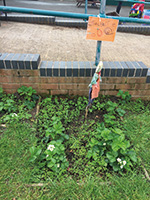 Sustainability is a complex subject but can be brought to early years children by starting from their own interests. Simply taking children out of the nursery can spark endless questions linked to sustainability. ‘Learning about sustainability comes from an authentic position if it comes from the observations of children. Practitioners do not need to know everything but to use the philosophy that they can find out together. Do it as a learning project with it coming from the child and finding out together what is happening, such as why is there pollution in the park?’ suggests Ms Boyd.
Sustainability is a complex subject but can be brought to early years children by starting from their own interests. Simply taking children out of the nursery can spark endless questions linked to sustainability. ‘Learning about sustainability comes from an authentic position if it comes from the observations of children. Practitioners do not need to know everything but to use the philosophy that they can find out together. Do it as a learning project with it coming from the child and finding out together what is happening, such as why is there pollution in the park?’ suggests Ms Boyd.
She advocates beginning with place-based learning, such as talking about the issues seen on the high street. ‘Rather that just go from A to B and ignore the shops that are boarded up, and homeless people, you can use them as a starting point for a conversation,’ she says. ‘Going to the shops can also enable children to actually see money being used to purchase items and lead to reflecting on the importance of local shops and the economic side of sustainability.’
Tops Havant in Hampshire, part of Tops Day Nurseries, became the first Plastic Free Day Nursery after children decided to clean up their local beach. It took this further by looking at the rubbish and writing to the manufacturers to inform them that their packaging was being discarded. The nursery then took action to stop using single-use plastics.
Managing director Cheryl Hadland says that by encouraging children to take pride in their local community they can become interested in wanting to maintain and improve it, such as planting trees and flowers to make the area look nicer and combat air pollution. She has helped to set up the sustainability charity GECCO, which shares best practices including children’s activities (see Resources).
Ms Hadland believes it is easy to be child-led because children are ‘naturally curious’ and just need to be encouraged by listening, answering and asking questions back. ‘Story books can stimulate interest and activity, and projects often start off when children empathise with creatures such as turtles and whales getting tangled in, or eating, plastic,’ she adds.
‘Children love flowers and picking fruit and vegetables that they have grown, so this is a particularly good way to start talking about the environment, bees, climate change, and plants cleaning the air.’
PROVIDING A STARTING POINT
To avoid children’s learning about sustainability being ‘tokenistic and shallow’, Ms Boyd says they should also be encouraged to incorporate the Characteristics of Effective Learning such as investigating and exploring. She recommends coming from a British Values perspective because this is intrinsic to the social and cultural dimensions of sustainability. Children can also be encouraged to consider areas such as democracy and respect, while equality will enable settings to be more authentic in their explorations.
Ms Boyd recalls early years children questioning who has a right to be on a beach after seeing a sign that horses were not allowed. This led them to question whose beach it is and consider how it could accommodate everything. ‘We have got to be provoking children to ask questions because children are more authentic questioners than adults and we don’t give them enough credit for this,’ she says. ‘If we can provide children with a starting point on sustainability, just think about the ripple effect it can have through their coming school years.’
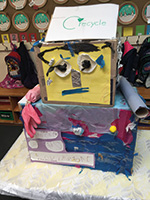 CASE STUDY: Penguins Nurseries in Prenton and Spital, Merseyside
CASE STUDY: Penguins Nurseries in Prenton and Spital, Merseyside
‘Sustainability is a huge area so we started small by looking at recycling and have taken it from there,’ explains owner Jan Davies.
The two nurseries began by creating two characters, Margaret and Michael, out of recycled materials including shredded paper and old clothes. The children saw that items which they may have thrown in the bin could be used to create something new instead of going to landfill. They then introduced labelled containers for recycling, composting and reusing, and children have become expert at identifying different materials, looking at recycling labels and deciding whether an item can be repurposed.
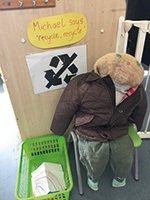 ‘Now at snack time the children decide whether their wrapper or fruit peel should go in the bin or in a pot to be placed in a compost heap. The children confidently and independently take their fruit peel to the garden compost bin and regularly check to see if the compost process has begun. Once the compost has formed it is then used in our fruit and vegetables patches. This allows us to explain to the children how the “goodness” in the fruit peel, which they cannot eat, can be used to help more fruit and vegetables grow,’ says Ms Davies.
‘Now at snack time the children decide whether their wrapper or fruit peel should go in the bin or in a pot to be placed in a compost heap. The children confidently and independently take their fruit peel to the garden compost bin and regularly check to see if the compost process has begun. Once the compost has formed it is then used in our fruit and vegetables patches. This allows us to explain to the children how the “goodness” in the fruit peel, which they cannot eat, can be used to help more fruit and vegetables grow,’ says Ms Davies.
Practitioners use open-ended questions to promote children’s sustained shared thinking and have expanded on recycling by discussing how to use things sparingly, repairing instead of replacing items and buying goods with less packaging. When considering how they should care for the plants, one child suggested watering them. This led to a discussion about how they could recycle rainwater, which they now do.
As children have become aware of how they should be environmentally friendly, they have taken the message home. ‘Many children tell their parents not to leave on the lights, not to throw all the rubbish in the same bin and to remember to take their bags for life with them to the supermarket,’ says Ms Davies.
Children lead the learning and have made the connection that what they do can impact on the wider world, particularly the oceans. They wrote a play based around this theme with pirates unable to get to an island because they had thrown plastic bottles into the sea. To support their interest, a parent is bringing in a turtle, and a student will be speaking to the children about his role in saving turtle eggs in Costa Rica this summer.
‘We encourage the children to discuss and debate and ask them to tell us what they think we should do,’ says Ms Davies. ‘We check that they don’t just do things but understand why.’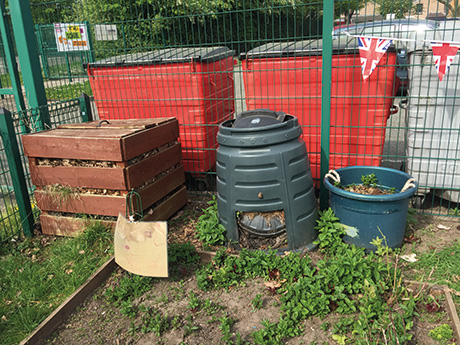
CASE STUDY: Everton Nursery School and Family Centre, Liverpool
Realising that some young children did not understand the concept of mending things led to Liverpool John Moores’ Diane Boyd and Lesley Curtis, head teacher at Everton Nursery School and Family Centre, establishing the Intergenerational Skills Café.
‘We are such a throwaway society but we want to make families aware of what they can do and question consumerism. It is the children of today that are going to suffer from this,’ explains Ms Curtis.
The Café is held once a month at the Family Centre with children, their parents and elderly people from the community invited to cook, bake, fix bicycles, sew and knit together.
‘We can see people engaging with each other across the generations, learning from each other and building relationships,’ says Ms Curtis.
She adds, ‘Some families will always go for ready-meals because some parents do not have the skills to cook or they are cheap and convenient, but these have lots of packaging.
‘We show them how to cook simple meals from scratch and discuss the waste of packaging.’
TIPS
- Start with small projects, such as encouraging children to use resources sparingly, or investigate and get to know your local community in more detail as you go out on routine trips.
- Listen to the children in your care and build on their questions and interests.
- Encourage children to think about what they are doing and why, to ask questions, collaborate and problem-solve.
- Lead by example, by letting the children and families in your setting see that you’re actively being environmentally friendly and speaking to them about what you are doing and why.
- Use the internet to find a wealth of resources to support your sustainability journey and link with other interested settings to swap ideas and gain support.
- Connect with local organisations to find out the issues relevant to your community and how you can engage with them.
BOOKS
All the Wild Wonders: Poems of our Earth by Wendy Cooling and Piet Grobler
Poems to make children look, think and ask questions, such as: Why are trees so important? What can we do about rubbish?
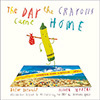 The Day The Crayons Quit by Drew Daywalt and Oliver Jeffers
The Day The Crayons Quit by Drew Daywalt and Oliver Jeffers
Introduce democracy by discussing how the crayons feel and how we can make choices.
 Oi! Get Off Our Train by John Burningham
Oi! Get Off Our Train by John Burningham
All sorts of endangered animals ask to join a boy and his toy dog on their train journey to dreamland.
 Yucky Worms by Vivian French and Jessica Ahlberg
Yucky Worms by Vivian French and Jessica Ahlberg
Why earthworms play a significant role in the environment, from aerating soil to composting dead matter, enabling seeds to germinate.
 Juliana’s Bananas: Where do your bananas come from? by Ruth Walton
Juliana’s Bananas: Where do your bananas come from? by Ruth Walton
Children of banana farmers on the Winward Islands help explore the issue of fair trade.
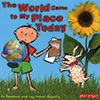 The World Came To My Place Today by Jo Readman and Ley Honor Roberts
The World Came To My Place Today by Jo Readman and Ley Honor Roberts
Grandpa explains how things from breakfast cereal to the rubber in tyres come from plants.
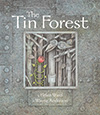 The Tin Forest by Helen Ward and Wayne Anderson
The Tin Forest by Helen Ward and Wayne Anderson
A message of renewal and hope as a man who lives on a rubbish dump creates a tin forest which is gradually populated by living creatures and plants.
Ten Things I Can Do To Help My World by Melanie Walsh
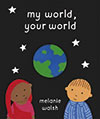 Simple suggestions – from turning off the TV to walking to school and feeding birds in winter – to help encourage an understanding of nature and conservation.
Simple suggestions – from turning off the TV to walking to school and feeding birds in winter – to help encourage an understanding of nature and conservation.
The Lorax by Dr Seuss (Harper Collins) – this classic picture book about protecting the environment was first published in 1971 and features the titular Lorax fighting to save the trees from the threat of a greedy industrialist.
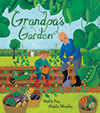 Grandpa’s Garden by Stella Fry and Sheila Moxley (Barefoot Books) – Billy helps his grandpa on his vegetable patch all through the year in this book about digging, planting, watering and harvesting your own food.
Grandpa’s Garden by Stella Fry and Sheila Moxley (Barefoot Books) – Billy helps his grandpa on his vegetable patch all through the year in this book about digging, planting, watering and harvesting your own food.
 Sunflower Shoots and Muddy Boots by Katherine Halligan (Nosy Crow) – this National Trust book is packed with activities and ideas for green-fingered children, including growing berries and making secret dens.
Sunflower Shoots and Muddy Boots by Katherine Halligan (Nosy Crow) – this National Trust book is packed with activities and ideas for green-fingered children, including growing berries and making secret dens.
Resources
- Liverpool John Moores University’s Early Education for Sustainability, http://bit.ly/2HmYDbx
- GECCO – green early years choices champion organisation, www.gecco.org.uk
- Eco-Schools – global programme engaging 19.5 million children in 67 countries, www.eco-schools.org.uk
- World Wildlife Fund – schools resources, www.wwf.org.uk/get-involved/schools
- Education for Sustainable Citizenship Award, http://bit.ly/2JtXSzZ/
- www.foodforlife.org.uk
- National Association for Environmental Education, www.naee.org.uk
- LEAF Education, http://bit.ly/2VI0sZj









